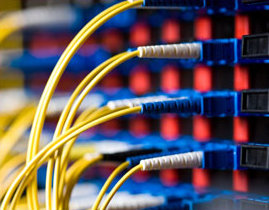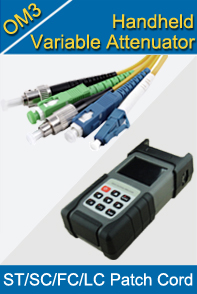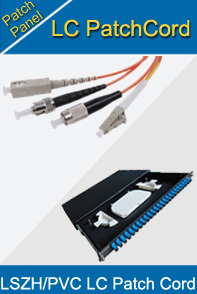-

- Sopto Home
-

- Special Topic
-

- Patch Cord Knowledge
-

- Difference between Optical Fiber Patch Cable and Fiber Pigtails
Patch Cord Knowledge
- Fiber Optic Connector Ferrule Design
- Fiber Optic Connector Design
- E2000 to ST Fiber Patch Cable Overview
- Acceptable and Unacceptable Fiber Connector End-Face Finishes
- Using Wipes and Cleaning Cassettes to Clean Fiber Patch Cords
- Not-Too-Tight Mating of Fiber Optic Connectors
- Matching Gel and Oils Contamination about Fiber Optic Connectors
- The Effect of Improper Use of Fiber Optic Connectors
- Why Fiber Optic Connectors are Fragile?
SOPTO Special Topic
Certificate



Guarantee
Except products belongs to Bargain Shop section, all products are warranted by SOPTO only to purchasers for resale or for use in business or original equipment manufacturer, against defects in workmanship or materials under normal use (consumables, normal tear and wear excluded) for one year after date of purchase from SOPTO, unless otherwise stated...
Return Policies
Defective products will be accepted for exchange, at our discretion, within 14 days from receipt. Buyer might be requested to return the defective products to SOPTO for verification or authorized service location, as SOPTO designated, shipping costs prepaid. .....
Applications
 Fiber Patch Cords have a widely application. Where the need for the optical fiber connection, where you need fiber optic patch cords.
Fiber Patch Cords have a widely application. Where the need for the optical fiber connection, where you need fiber optic patch cords.
Testing Equipment
FTTX+ LAN
Optical Fiber CATV
Optical Communication System
Telecommunication
SOPTO Products
- Fiber Optic Transceiver Module
- High Speed Cable
- Fiber Optical Cable
- Fiber Optical Patch Cords
- Splitter CWDM DWDM
- PON Solution
- FTTH Box ODF Closure
- PCI-E Network Card
- Network Cables
- Fiber Optical Adapter
- Fiber Optical Attenuator
- Fiber Media Converter
- PDH Multiplexers
- Protocol Converter
- Digital Video Multiplexer
- Fiber Optical Tools
- Compatible
Related Products
Performance Feature
Good Water-proof
Low insertion loss;
low reflection loss;
Stability, good repeatability;
High-precision ceramic ferrule;
Compatible with NTT standard;
Precision Grinding and fully testing;
Compliance with international standards
Patch Cord Knowledge
Recommended


Difference between Optical Fiber Patch Cable and Fiber Pigtails
What's the difference between fiber pigtail & fiber patch cord. Can we use a patch cord as pigtail by cutting in the middle of the cable?
Sopto finds such questions now and then on the Internet, it's true that there are still some peoples that are not familiar with but still interested in such knowledge. Keep this in mind; we would like to take this topic into the discussion by collecting opinion from related answers:
For some people, an optical fiber patch cable is ruggedize (providing additional fiber protection) and a pigtail is not (and therefore more brittle).
"We would expect pigtails while dealing with optical components, while when dealing with patch panels, equipment interconnections, etc. I would expect patch cables." "We would also expect patch cables to be double-ended (i.e. computerized at both ends) and pigtails to be single-ended (or not terminated)."
Patch cables have connectors on both ends; while, pigtails have a connector on one end and bare fiber on the other.
In our opinion, we would agree all of the above comments, and also give the simplest understanding of ourselves: the fiber optic patch cable = fiber optic connector + fiber optic cable + fiber optic connector, while the fiber optic pigtail = fiber optic connectors + fiber optic cable. We can really use a patch cord as pigtails by cutting in the middle of the cable.
Officially speaking, fiber optic patch cable, often called fiber optic patch cord or fiber jumper cable, is a fiber optic cable terminated with fiber optic connectors on both ends. I have two major application areas: computer work station to outlet and fiber optic patch panels or optical cross connects distribution center. Fiber optic patch cables can be divided into different types based on fiber mode, cable structure, connector types, connector polishing types and cable sizes.
All types of fiber optic patch cables can be found at sopto.com. LC patch cable is the most commonly used, other connector types include ST, SC, FC, etc., which can be either the same types of connector on both ends, or different connectors on each end (Hybrid fiber optic patch cables).
Fiber optic pigtail is a piece of cable terminated with fiber optic connectors at only one side of the cable while leave the other side no connectors, so that the connector side can link to the equipment and the other side can be melted with optical cable fibers. Pigtail fiber optic cables are usually used with fiber optic management equipment like ODF, splice closures and cross cabinets.
Commonly used fiber optic pigtails types are FC, LC, MU, E2000, MTRJ and ST pigtail. According to the fiber mode types, there are single mode types and multimode types.
The pigtail, when separate from a line, looks like a bundle of loose, capped wires that are bound together at one end. The bound end connects to the main cable, where the individual strands of the fiber pigtail are permanently fused, or spliced, to the multicore cable. When the process is complete, the pigtail is a non-removable piece of the system.
For more info, please browse our website. For purchasing more fiber optical patch cords, please contact a Sopto representative by calling 86-755-36946668, or by sending an email to info@sopto.com.




